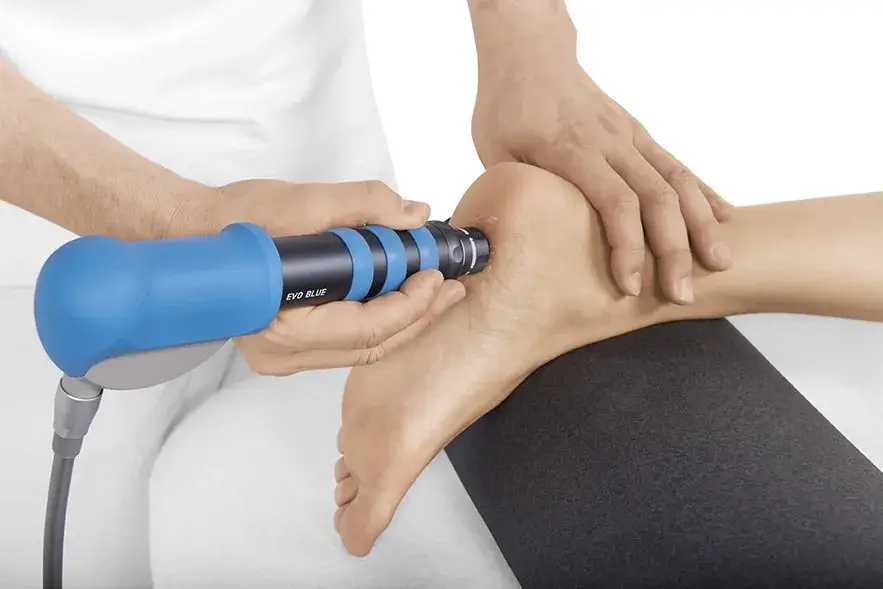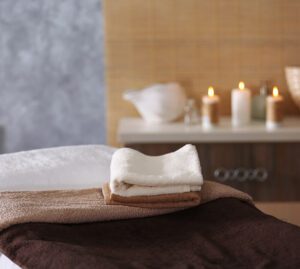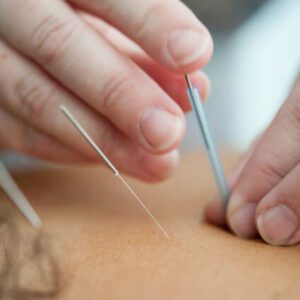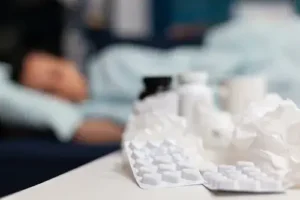
Do I have plantar fasciitis?

Being the base of the body, the feet easily accumulate tension, which can be a source of various changes, and at the same time be related to other dysfunctions in the body, such as in the knees, hips or spine.
In this article we intend to reveal a little about the main causes of pain in the plantar fascia, what this fascia is, what are the most common and effective treatment methods and how to release accumulated tension in the feet through myofascial release.
Plantar fasciitis is the most common cause of plantar heel pain, with an incidence of one million patient visits per year in the United States of America. Another condition that is normally associated with the diagnosis of fasciitis, and which is evaluated on x-rays of the feet, is heel spurs. How plantar fasciitis actually appears is not fully understood. It is currently believed to be secondary to degeneration, micro tears within the plantar fascia, and not due to an inflammatory process. On the other hand, heel spurs are believed to be the result of pulling forces at the origin of the plantar fascia and not the cause of plantar fasciitis.
On this side you may be wondering “what is fascia and where is it?”. Now, fascia is a “component of soft tissue (…), which surrounds all organs, muscles, bones and nerve fibers” and functions as a “tensional force transmission network throughout the body”. We have fascial tissue (fascia) throughout the body In the foot, it is called the plantar fascia. Now, the plantar fascia runs from the calcaneus (heel bone) to the toes, with the majority of our body’s load being placed on the innermost region of the fascia, that is, from the inside of the heel to the first toe.
Plantar fasciitis is a very common cause of pain at the base of the heel that can be triggered and worsened by prolonged standing, walking, running and also obesity, among other factors. With bad postures on a daily basis, a sedentary lifestyle (which will not be your case, we hope), the stress we are subject to, or even with sports, it is quite natural for tension to develop in some muscles, or even even postural changes that are more or less difficult to control. But let’s understand what are the risk factors for the appearance of this pathology.
Risk factors
Most injuries in this anatomical region occur at the origin of the fascia, that is, in the heel area. As the plantar fascia helps support the medial arch of the foot, any load ends up stretching the plantar fascia. The plantar fascia is also tightened by stretching the big toe (1st toe). According to this study, any factor that mechanically loads the plantar fascia can be considered a risk factor for plantar fasciitis.
Risk factors can be divided into intrinsic and extrinsic factors.
Intrinsic factors, that is, related to the person who feels the pain, include:
-
- obesity
-
- flat feet
-
- cavus feet
-
- reduction in ankle dorsiflexion (ankle bending) range
-
- leg muscles with excessive tension
Extrinsic factors, that is, factors related to the environment and training, include:
-
- running on hard surfaces
-
- walk barefoot
-
- sudden increase in intensity and/or volume of running or training
First of all, it is important to define what is meant by “Myofascial Release”. Now, this is the term given to a specific form of therapy, which is intended to have an effect on the fascia. Myofascial therapy techniques can be applied by a therapist, in an office consultation, or they can be self-applied, as we will describe in this article.
Treatment
Treatment is largely non-operative, with 90%-95% of patients experiencing resolution of symptoms within 12–18 months.
Activity modification – Conditioned training, or modification of the activity, is imperative. Especially those that involve repetitive impacts, such as running and jumping, should be avoided during the treatment phase. You can continue to do non-weight bearing activities, such as cycling, swimming and rowing (if you go to a gym) to maintain your cardiovascular fitness. A gradual return to activity may be permitted after you have been symptom-free for 4-6 weeks and no longer have localized tenderness over the plantar fascia.
Ortheses / Insoles
The use of orthoses, including heel pads (small insoles just for the heel) and plantar fascia support insoles are a good and effective option initially to alleviate the pain of plantar fasciitis. In If there are no major biomechanical changes such as flat or cavus feet, prefabricated insoles (purchasable in a store like decathlon or sport zone) are not inferior in their effectiveness to custom-made ones. However, some care must be taken when purchasing: to reduce the load on the plantar fascia when supporting weight, the insole must help support the inner arch of the foot without putting any direct pressure on the plantar fascia. For athletes, semi-rigid insoles are the most practical solution and in this case, ideally they should be manufactured by a podiatrist or other competent professional for this purpose.
Plantar fascia stretching and ice massage
Plantar fascia and leg stretches are inexpensive and easy to learn with the help of your physical therapist. Specific plantar fascia stretching has been shown to be more effective than an isolated Achilles stretching program, and should be performed and held for 30 seconds and repeated at least three times in each session.
A little further down in this article we give an example of how to perform myofascial release on the foot with a tennis ball.
This should be done daily, especially before taking the first step in the morning and before standing after a prolonged period of sitting. Ice massage can also help reduce plantar fascia pain. One way to apply this ice therapy involves rolling a frozen can under the foot with moderate pressure for five to ten minutes at the end of each day, somewhat similar to the first step presented in the video below, regarding myofascial release.
Analgesia
The use of anti-inflammatories to treat plantar fasciitis is a widespread practice that has been questioned since, according to the most recent literature, plantar fasciitis is not an inflammatory process. However, when combined with other treatment modalities, whether nonsteroidal anti-inflammatory drugs (NSAIDs) or simple analgesics, they can help provide short-term pain relief.
Corticosteroid injection
Localized steroid injections (known as infiltrations) into the plantar fascia provide effective short-term relief from plantar fascia pain for up to three months. It must, however, be considered that there is an increased risk of plantar fat atrophy and rupture of the plantar fascia with the application of these injections and, therefore, repeated injections should be avoided if possible.
Focal extracorporeal shock wave therapy
If you have pain in the plantar fascia that is resistant to treatment you can be referred or look for a clinic where ultrasound and shockwave therapy are performed as part of the sports physiotherapy service. This treatment has been shown to be effective for cases of chronic plantar fasciitis that have not responded well to conservative treatment.
This type of treatment is a non-invasive procedure, and requires two treatments one week apart for optimal effectiveness, according to some authors (you must follow the recommendations of the doctor or physiotherapist who is monitoring your case).



How can I apply myofascial release?
Thinking about our most critical and skeptical readers, we want to leave here the safeguard that there is some controversy regarding the effectiveness of this form of therapy/treatment in scientific literature. However, from our experience, its application has mostly beneficial effects, when applied according to clinical reasoning.
To self-apply myofascial release techniques, different materials can be used, however the most recommended are lacrosse balls, tennis balls, or myofascial release roller.
The application of self myofascial release (ALM) techniques allows, with just a few minutes of daily application, improvements in flexibility and efficiency of movements through the inhibition of overly active muscles, reduction of pain and muscle recovery. Myofascial release works through pressure on trigger points, allowing the most tense and contractured structures to relax.
As an evaluation we will carry out the following test:
Barefoot, standing, try to touch the floor with your hands, keeping your knees straight. Analyze and note how far you have reached (example: in the middle of the tibia, known as the “shin” bone).
Self Myofascial Release Technique:
-
- Take 2 minutes to apply this technique to each foot. If desired, apply to the right foot and repeat the initial test, and then apply to the left foot and test again.
-
- With the tennis ball already on the floor and your feet (barefoot) step on the ball with one of your feet, applying pressure to crush the ball and at the same time performing self-massage in the longitudinal direction, thinking about five imaginary lines that go from each one of the fingers to the heel, running them.
-
- When you find points of greatest tension, stop at that point/s and perform flexion and extension movements of the toes (actively raising and lowering the toes), until you feel the tension and/or pain reduce.
-
- This is an exercise to do slowly, as if you want the ball to “bury” itself in your foot.
What are you waiting for, grab a tennis ball, watch the video to better understand the movements required, and feel the well-being that this exercise provides in your feet.
Amazed by the results? We believe so.
Now you have another strategy to take good care of your feet, knowing that they are one of the pillars for good posture, good sporting performance and consequently for your well-being.
If you liked this article, share it with anyone who could benefit from this information or leave us a message.
Sara Costa






